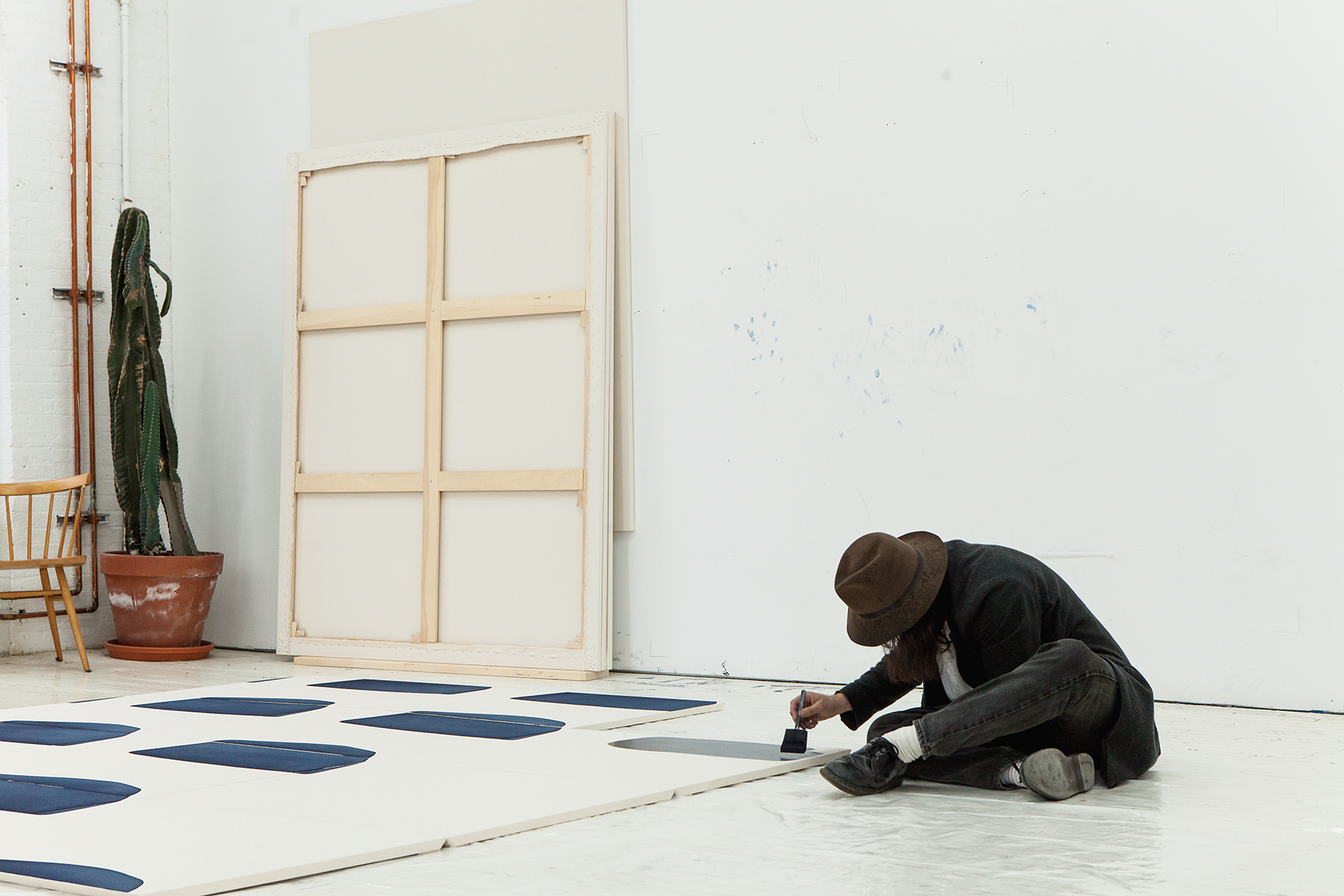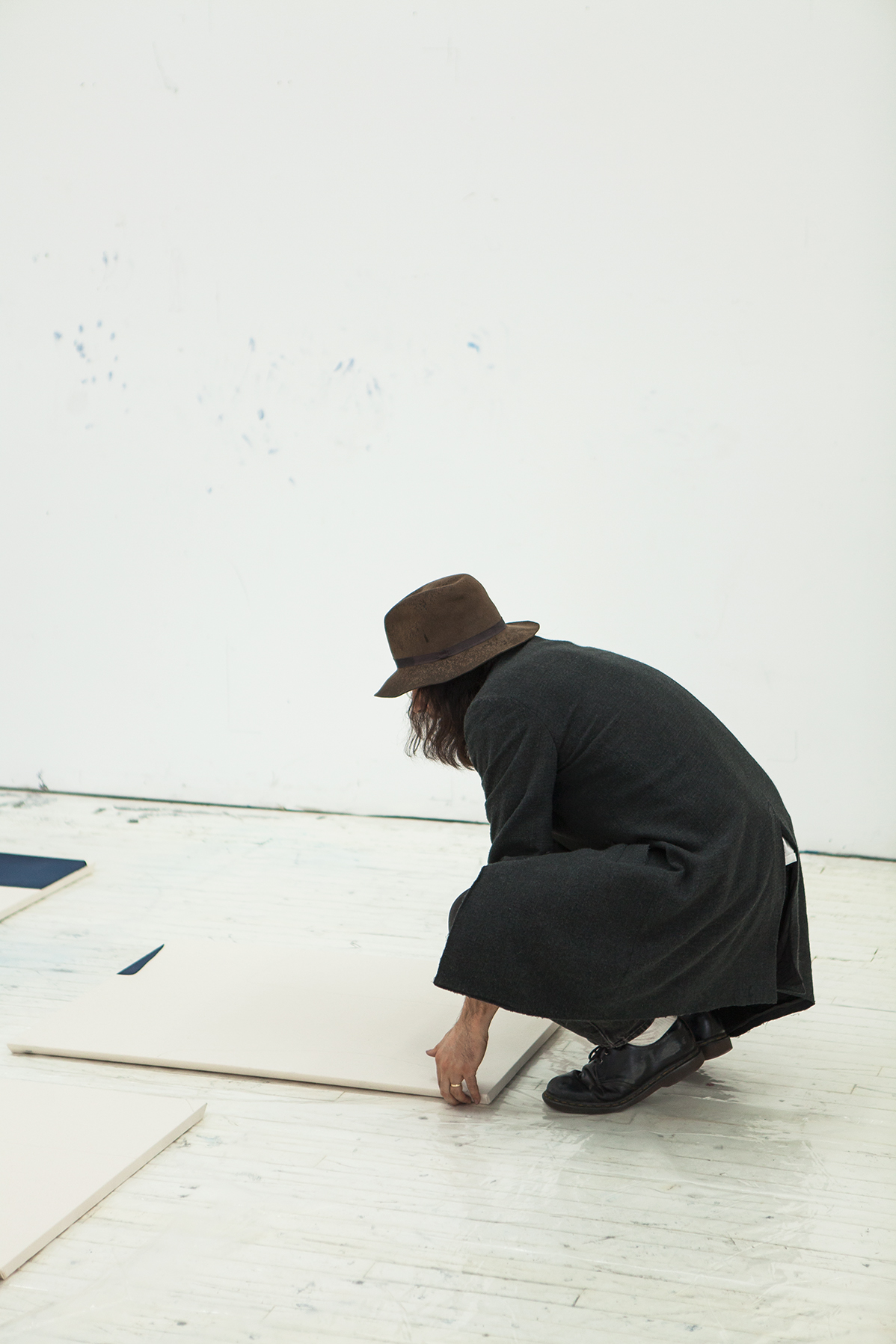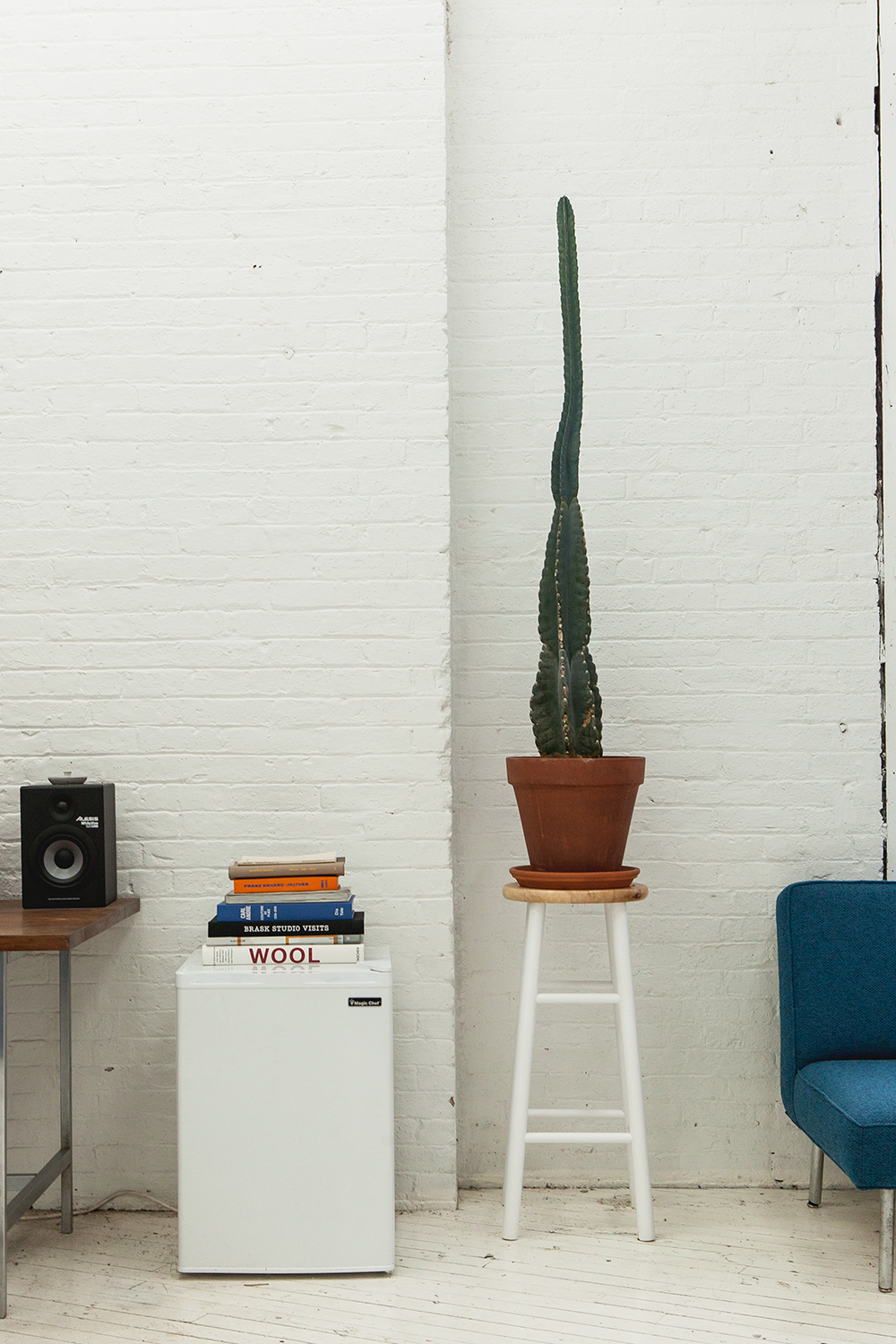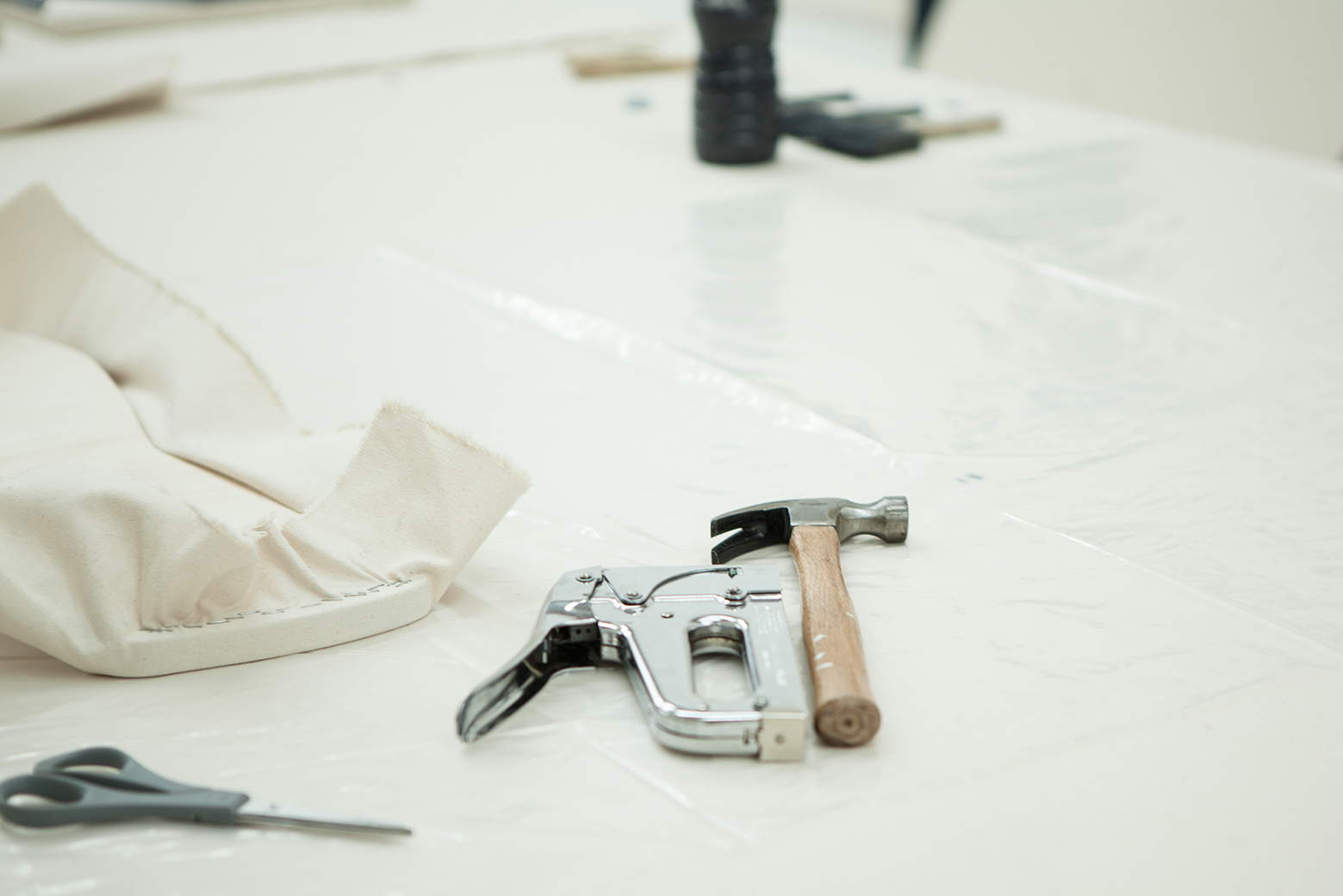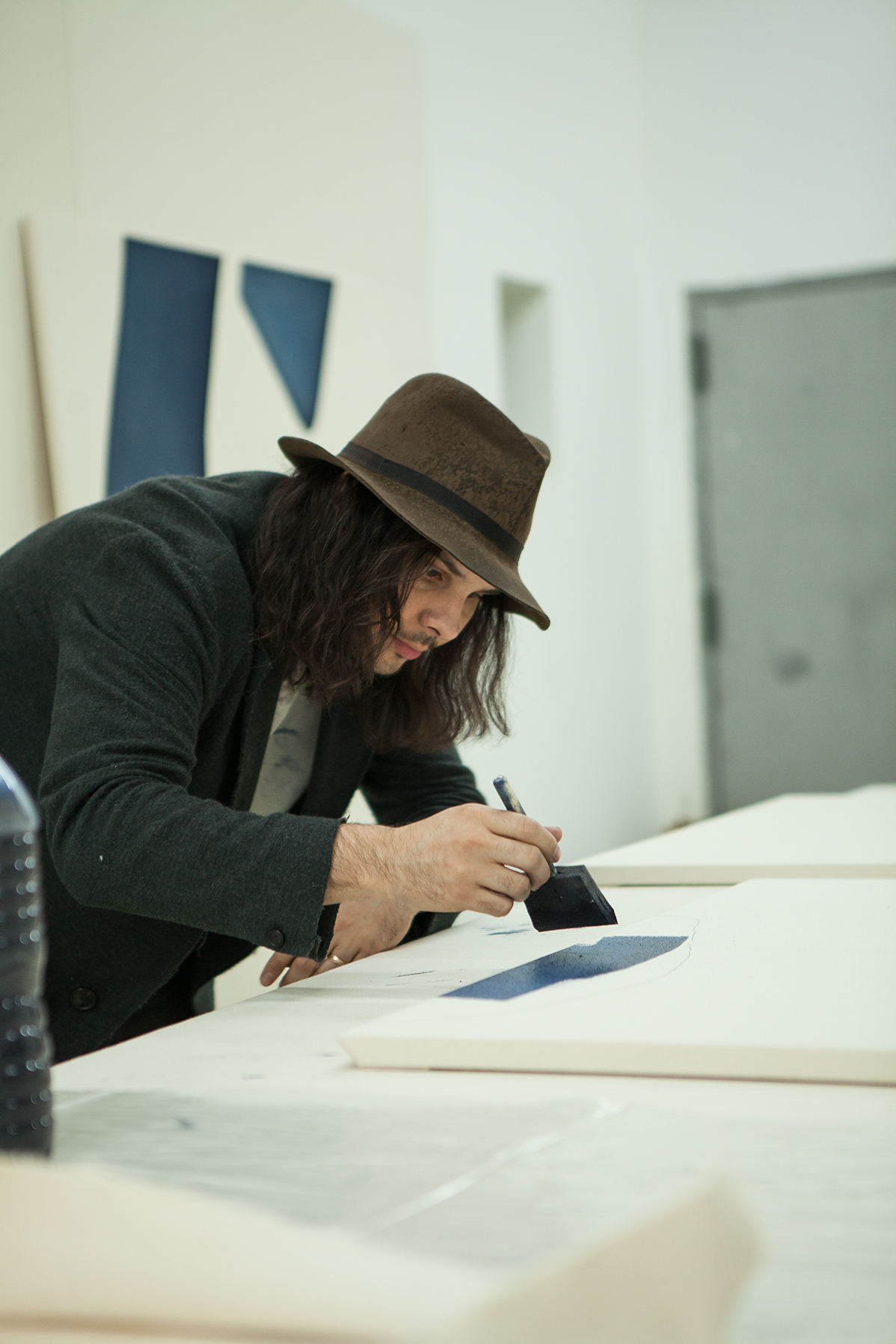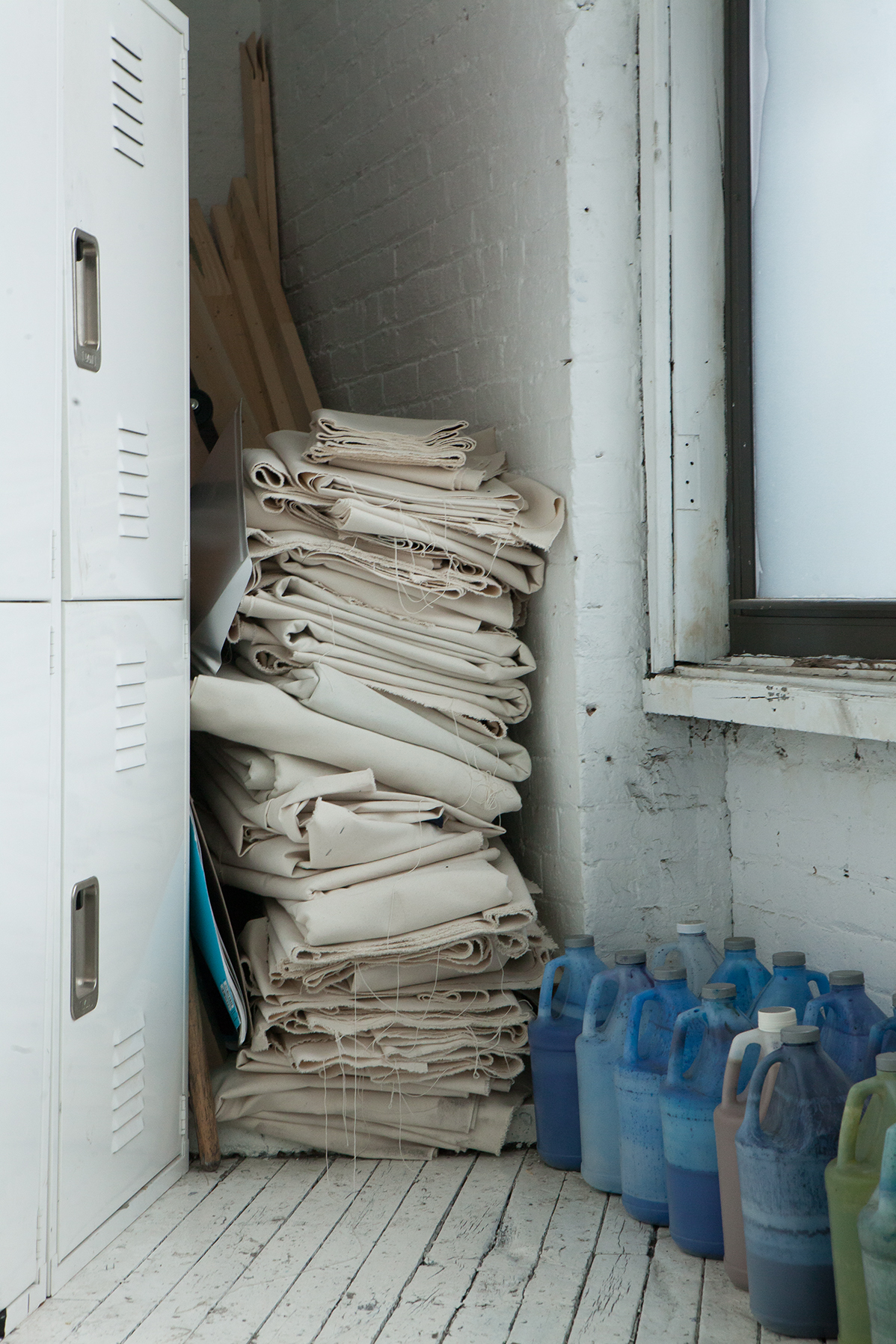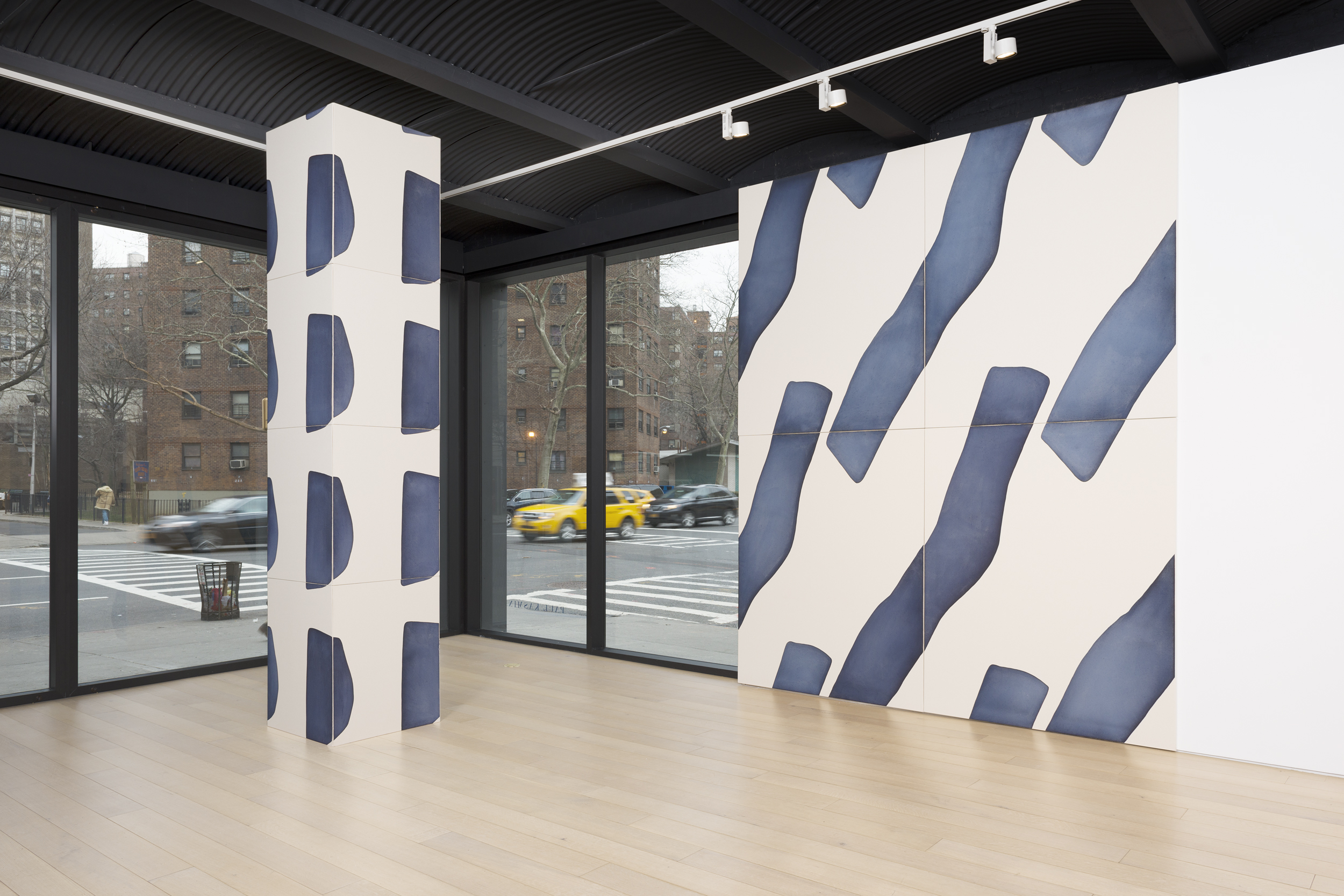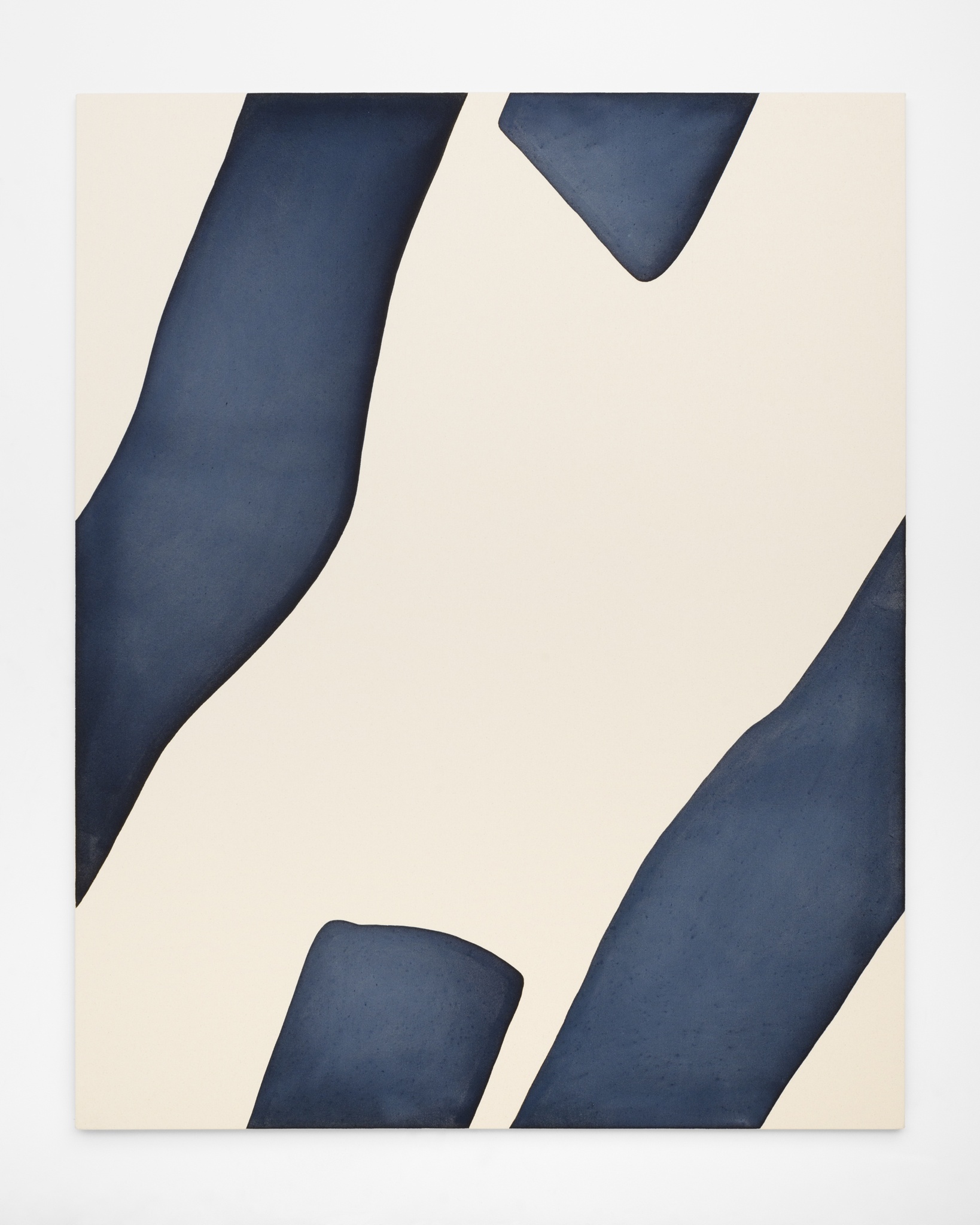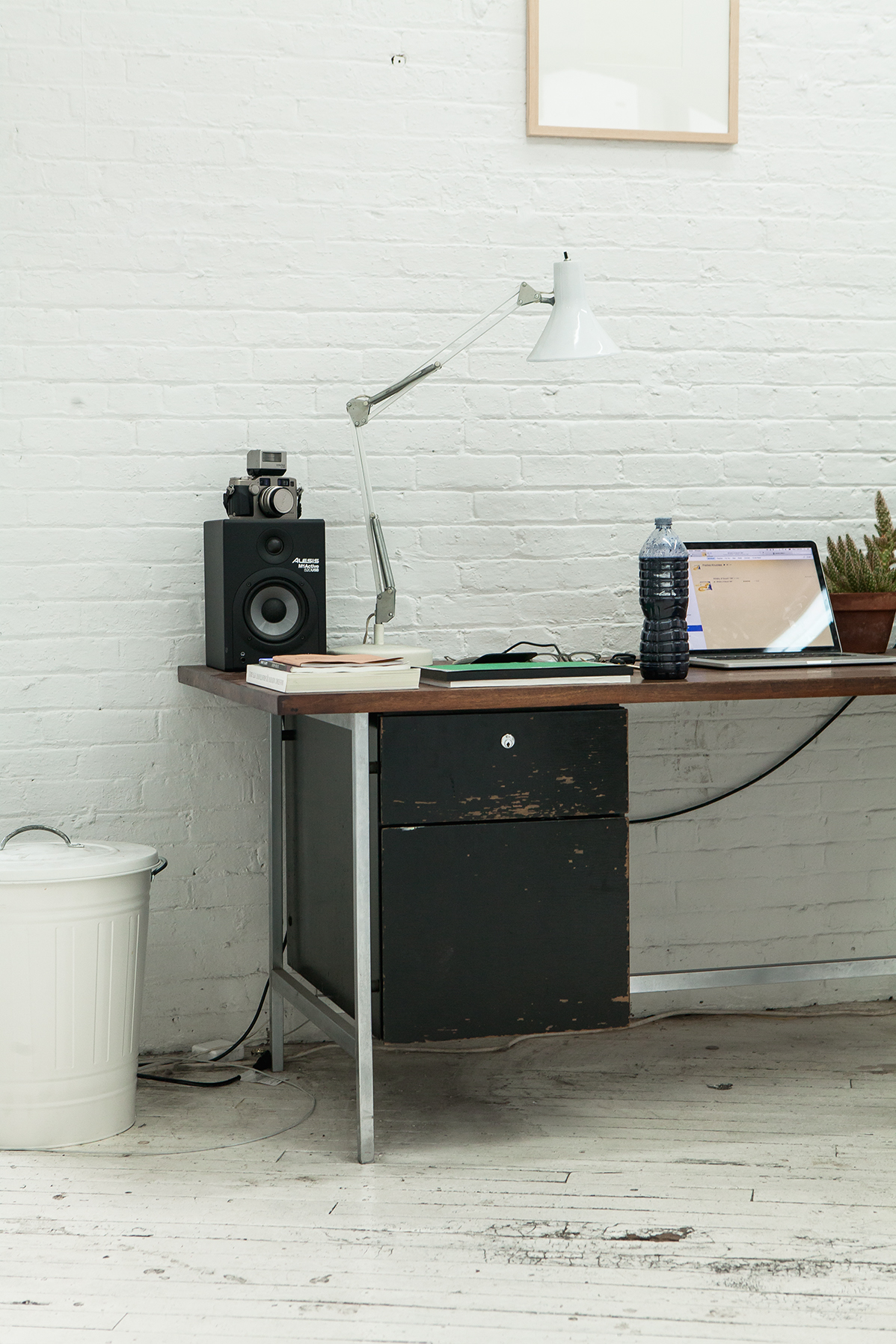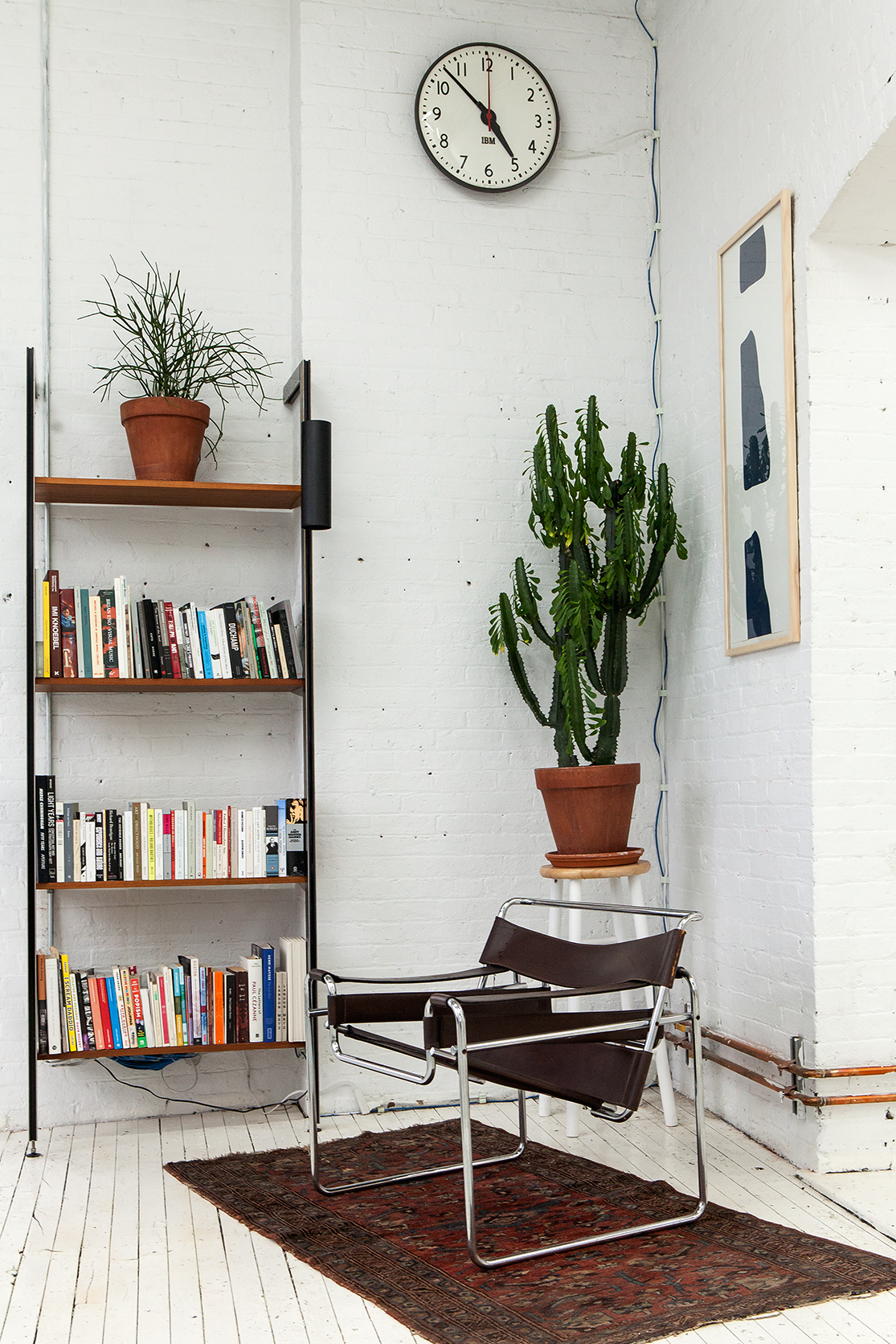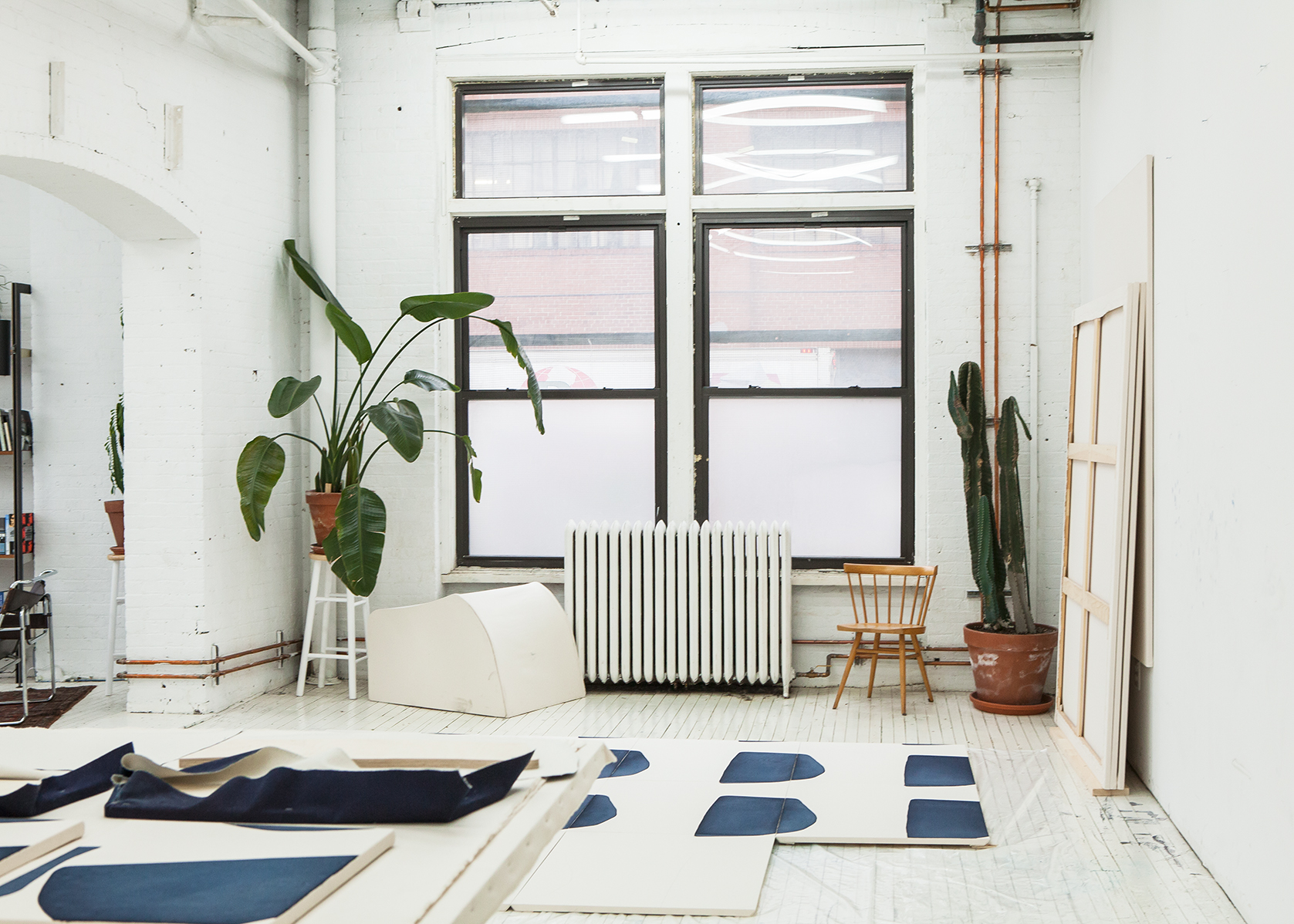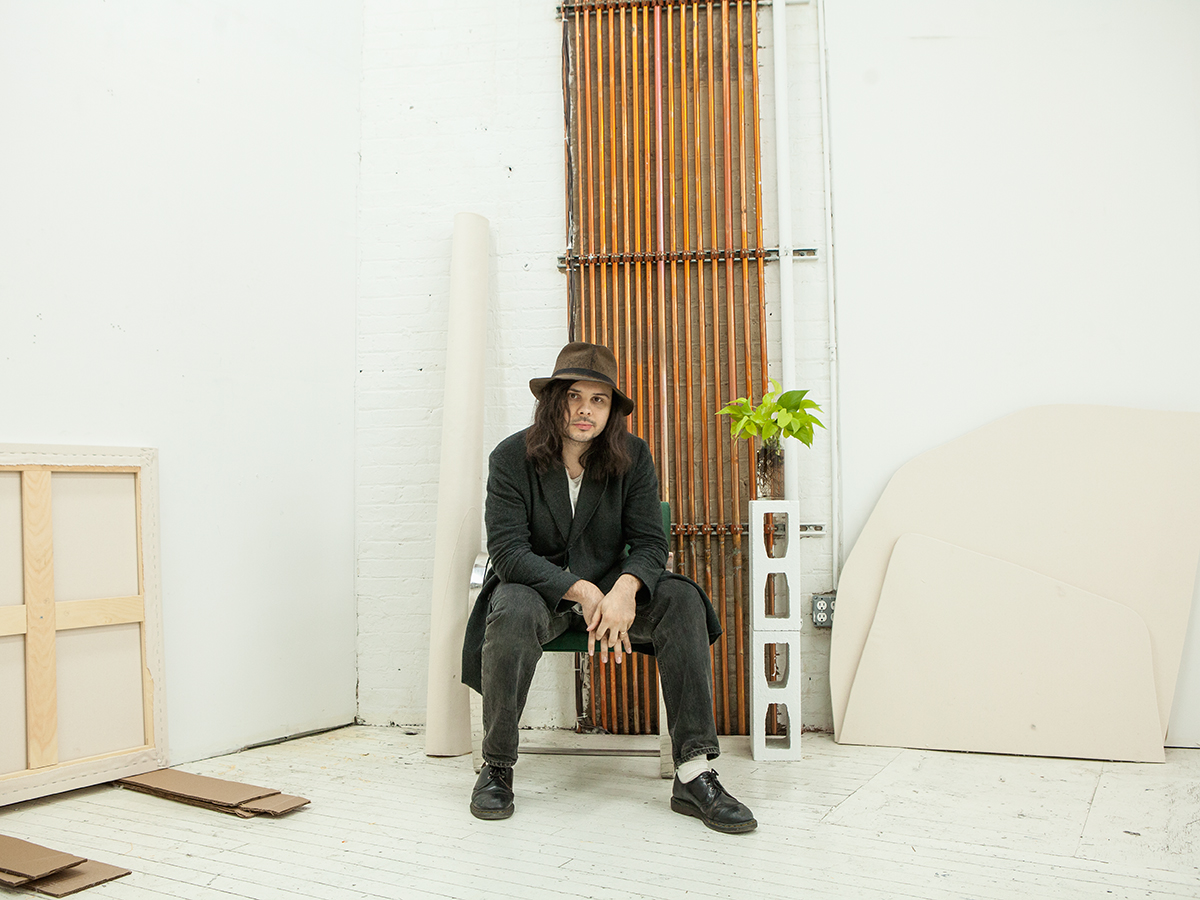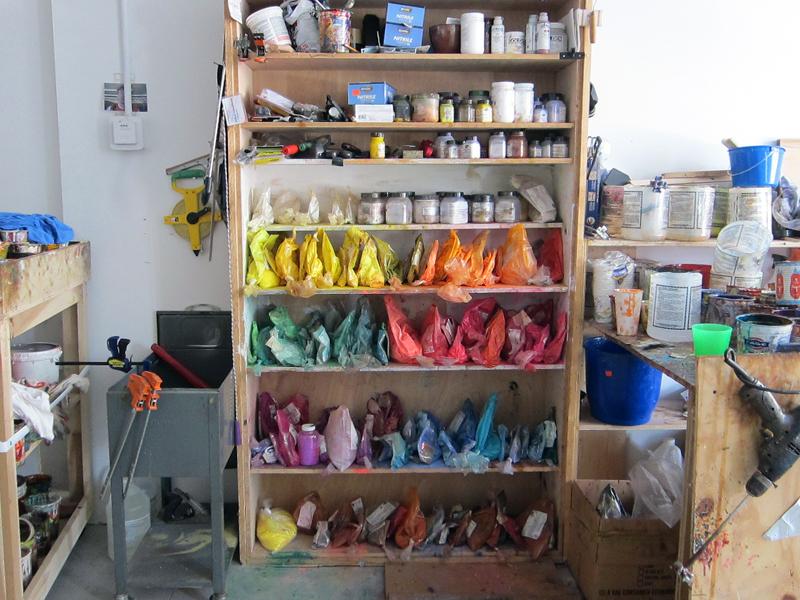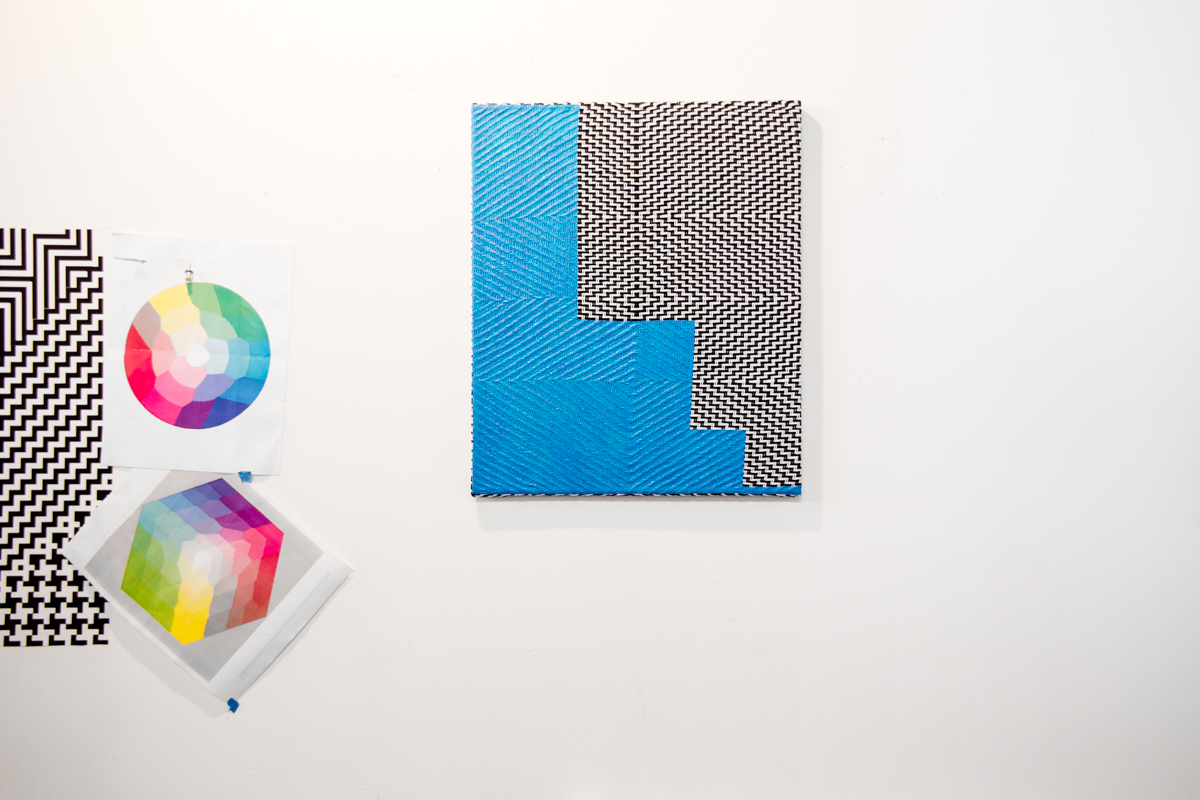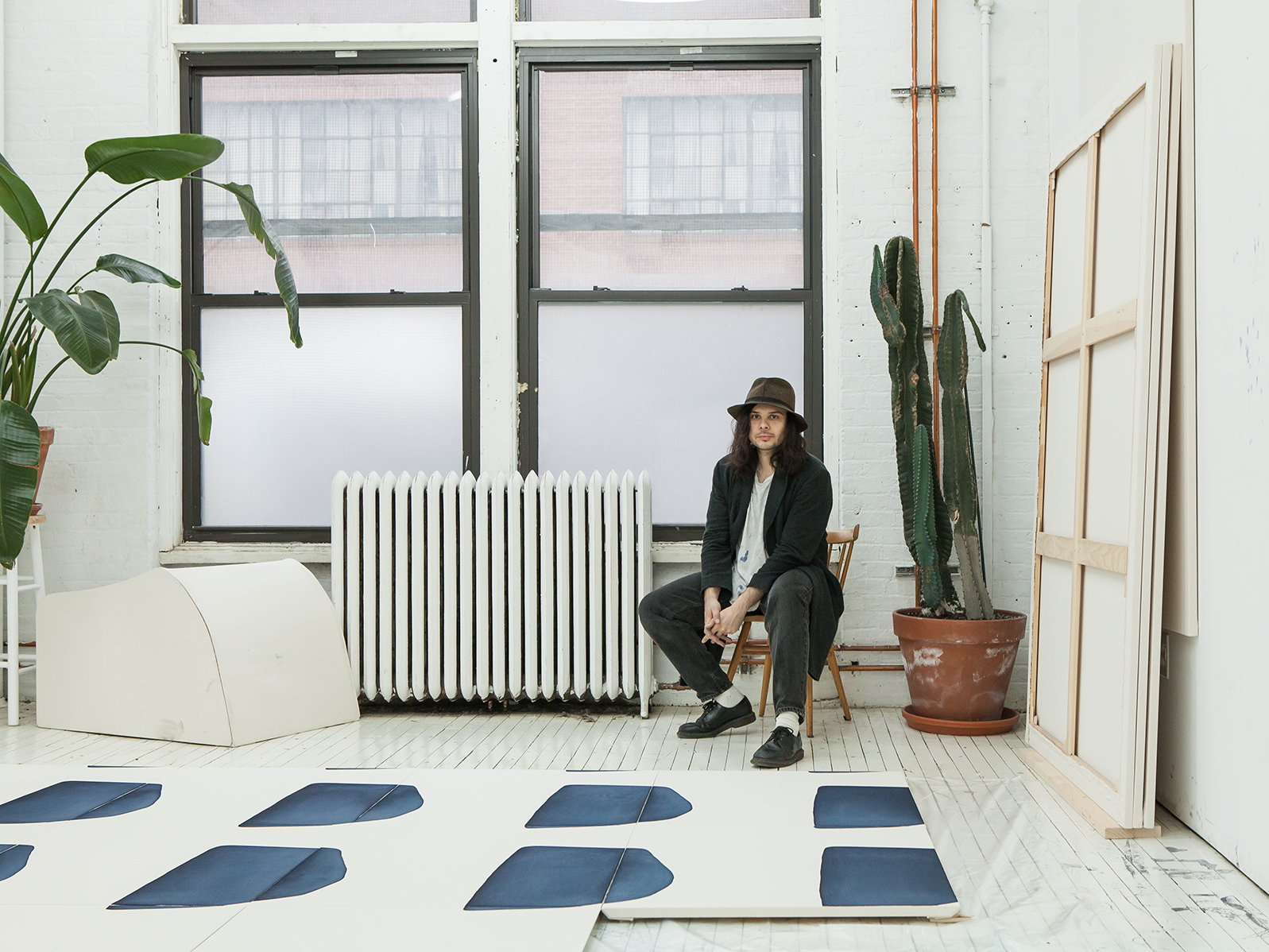
04.01.16
Studio Visit
For Brooklyn Artist Landon Metz, Painting Takes on a New Dimension
STUDIO PHOTOS BY SEAN SANTIAGO
Surprising elements — from a Duchamp readymade and postmodern tables to avant-garde music and architecture — are the seedlings with which 30-year-old Landon Metz sows his artistic philosophy. For Metz, whose studio resides in Bushwick, these are all materials that belong to the same creative ecosystem. They also provide fertile ground for his spare, lighter-than-air paintings, which tend toward the biomorphic and richly hued repeating patterns. His latest exhibition, open now through April 9th at Paul Kasmin Gallery in New York, centers around Metz’s affinity for the work of Color Field painter Morris Louis, one of the movement’s central figures. (He was directly influenced by its founder, the painter Helen Frankenthaler.) At the gallery, Louis’s 1958 painting Tzadik is exhibited alongside an installation by Metz. Edging into the sculptural, Metz conceived of three-dimensional paintings in direct response to the gallery’s existing glass façade. Their scale, color, abstraction, and judicious amount of raw canvas reveal how this emerging artist confronts the past to find his own originality.
Tiffany Lambert: How do you define your artistic practice? I read that you don’t consider yourself a painter. What title do you use? Can you talk about the significance of this distinction?
Landon Metz: I consider myself to be an artist, working with the vocabularies of painting, sculpture, installation, and even performance. The distinction for me is found in the desire, or lack thereof, to find resolution in the historical baggage that painting carries. I’m aware of the complications of the medium and I see this more as a performative tool than a narrative to find new value in. I find historical precedence and the surrounding culture to be raw material in its own right.
There’s a crucial link between your work and the art style of Morris Louis. How do you describe it?
I find the similarities to be more aesthetic than conceptual. I use a formal language that’s conscious of color field painting, especially Louis, but I’m more interested in the way the pieces function within a broader social system than finding meaning through material or pictorial investigations.
What other artists inspire your work? Where else do you get your inspirations?
I would say I’m most indebted to Duchamp and Cage, both for their revelations in finding authorship in external sources surrounding the work.
Can you describe your process of painting? How do you arrive at your forms (which are often abstracted) and your choice of colors?
I’m interested in acknowledging all constituents involved in the act of creating, exhibiting, and experiencing a work of art. Part of that is recognizing that my life has led to a specific personal aesthetic. It’s not my intent to erase this or anything else, rather to leave it present and use it as a tool in service of the overall mechanism of my practice. I work with seriality and installation to help shift the focus from any unique gesture (i.e. form or color) and more towards an experience.
Chance is an intrinsic element of your creative process but your works feel both random and carefully orchestrated. Can you speak to that?
Chance is found mostly in the way the works function in a space and environment. More often than not the architecture ends up dictating much of the work, the historical narrative that brings a place to life ends up really altering how the paintings function.
In your exhibition currently up at Paul Kasmin, you made work that responded to the architecture. Can you talk about how you came to that decision? What was that process like?
In this particular space I was really drawn to the glass corner facade on 10th and 27th. It felt like a democratic gesture to make a piece that could potentially be experienced from the exterior while walking by. My work always considers the space and place it inhabits and tries to find a sense of authorship in both.
I’m curious to know more about your studio. How did you find the space? How long have you been there?
I found it through a friend and I’ve been there for a year and a half now.
Does your space inspire your work?
There’s definitely an attempt on my part to cultivate a certain type of workspace. I find I need my working environment to reflect a particular state of mind to really thrive, a sense of meditative clarity.
What does a typical day look like? How do you start and end a workday?
It really depends. Right now I’ve just finished a string of exhibitions and I’m in decompression, research mode. I walk an hour from my apartment in Bed-Stuy to my studio in Bushwick, water my plants, work on the new pieces most of the day, do some reading, download some music, then walk home.
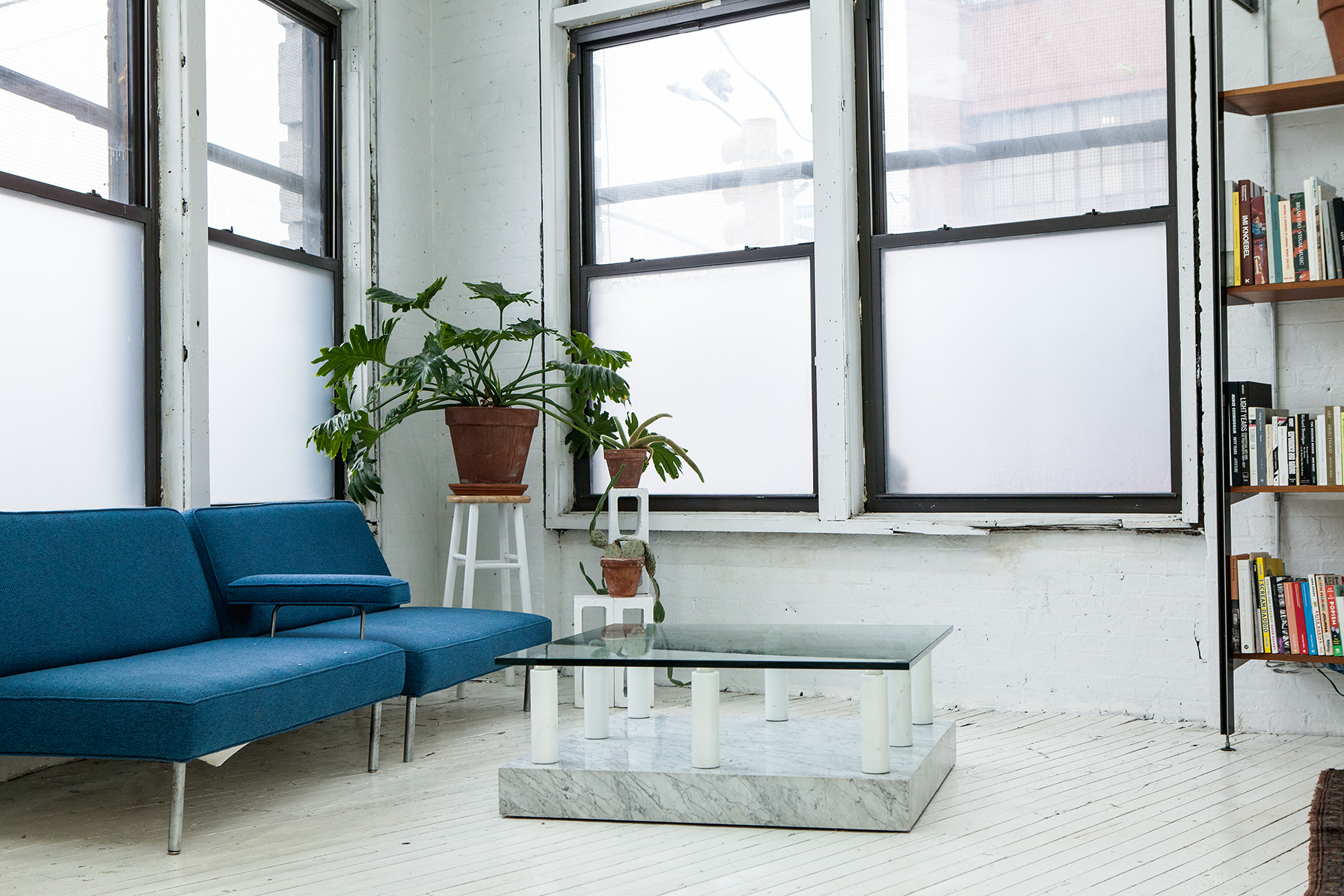
I couldn’t help but notice that you have an Ettore Sottsass Central Park table — what drew you to this particular piece?
I love Italian art and design. I have a real connection to Italy in general. I’m particularly interested in the Central Park table because Sottsass designed it for the American modernists at Knoll and it feels uncharacteristically restrained for him in a way. It seems to be a cross section of not only Italian and American design but also modernist and post-modernist modes of thought.
Do you have an interest in design and furniture?
I feel as though we’ve witnessed a cultural collapse in the last decade. Hard line distinctions no longer seem viable or useful. I have a great deal of respect and appreciation for architecture, design, music, fashion etc. equally. Scott Burton is a great example of an artist that saw this coming and built a strong practice around the role of art in the world at large.
